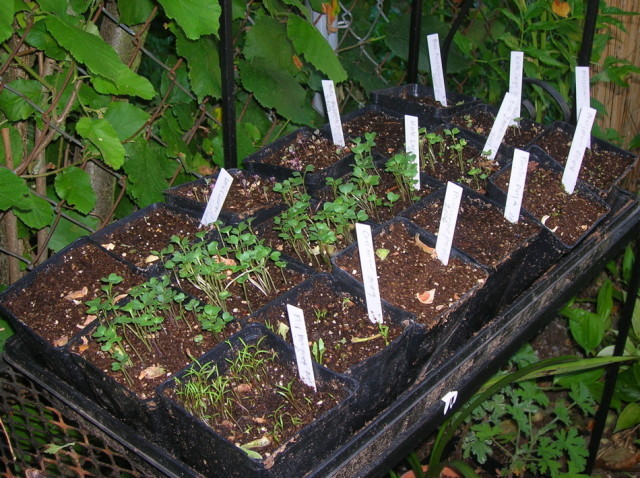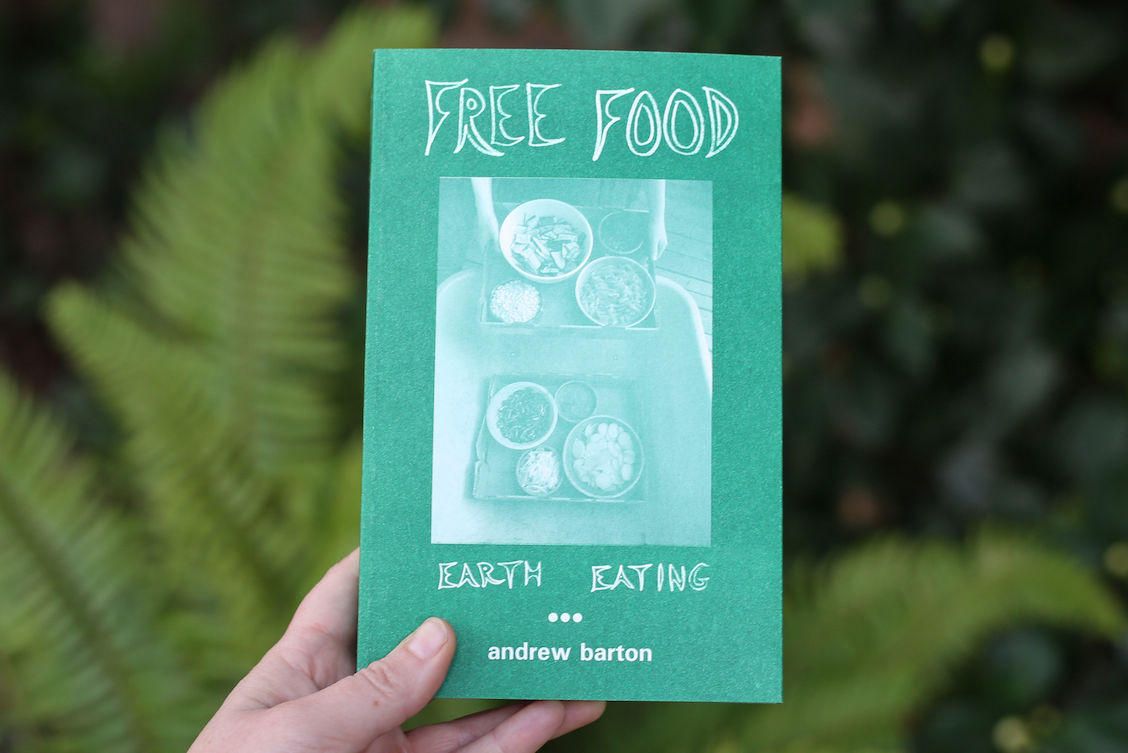Summer’s Here and the Time is Right – to Plant Veges!

Flats of broccoli, kale and leek seed I planted last July – different seeds emerge at different rates.
I recently heard someone say it is "too late" to plant vegetables. I’m happy to report that isn’t true. There are plenty of vegetable seed and starts that can be planted this month for summer, fall and winter harvest. Here’s what lies in store for the month of July in the vegetable patch:
For starters, there are greens.
Greens
Most greens grow best in cool spring and fall weather but some will also do fine in our hot summers if you take special care with watering and maybe providing some afternoon shade.
Decent summer greens include arugula, basil, lettuce, some Asian greens like mustards and bok choi. Cilantro and spinach are harder to grow in summer, as they quickly bolt (go to seed and stop producing tasty leaves) but given enough afternoon shade and plenty of moisture, even they can work. Look for varieties described as "good for summer sowing" – breeders are producing more bolt-resistant varieties every year.
Tips: Plant under shade cloth or where plants receive solid morning sun and afternoon shade. Sow greens every two weeks, keep well watered and harvest promptly to prevent plants from getting stressed and bolting.
Warm-weather crops
In early July, you can still plant some warm-weather crops. So much depends on the weather (as this spring demonstrated) but there may be time for one more crop of corn and beans from seed – or plant starts. You could still get a decent crop if you plant starts of tomatoes, eggplant, peppers, squash, melons, cucumbers and pumpkins.
While you’ll harvest fewer fruit than if you’d planted earlier in Cozy Kotes, you could still get plenty if there’s a long, warm autumn. Plus, many folks planted their tomatoes out when it was still cold and their tomatoes just sat in misery for a month. Warm-weather crops planted in the balmy days of July could surpass those stunted from June’s unseasonably cold, wet conditions.
Tips:
First, choose fast-ripening varieties (labels usually say how many days to harvest) and smaller-fruited varieties, which ripen quicker. Keep well-watered, plant in rich soil in a warm or even hot spot, and fertilize well with organic fertilizer. If needed, cull the quantity of fruit on each plant to speed the ripening of existing fruit.
Autumn and winter crops
These vegetables will supply you with food in autumn, winter or early spring.
Good autumn crops to direct-sow in July include beet, bulbing fennel, and carrots. Through mid-July, sow green onions and cole crops (crucifers) like quick/early broccoli and cabbage. Slower growing Brussels sprouts, cauliflower, late cabbages and slow/over-wintering broccoli are best sown through mid-July – or buy starts if it’s getting to the end of July. In mid-July, also seed parsnips and parsley, both of which will overwinter. Later in the month through early August, sow peas, radishes, spinach, and Swiss chard for late fall and winter harvest.
Tips: In summer, it’s easiest to sow seed under shade cloth. You can also sow seed in pots or flats in bright but indirect light – they’re easier to keep watered and you can move them into the garden when they are a bit sturdier. Remember that root crops like beets and carrots should be direct-sown in the ground, as they do not transplant well.




